A (brief) history of the folding phone
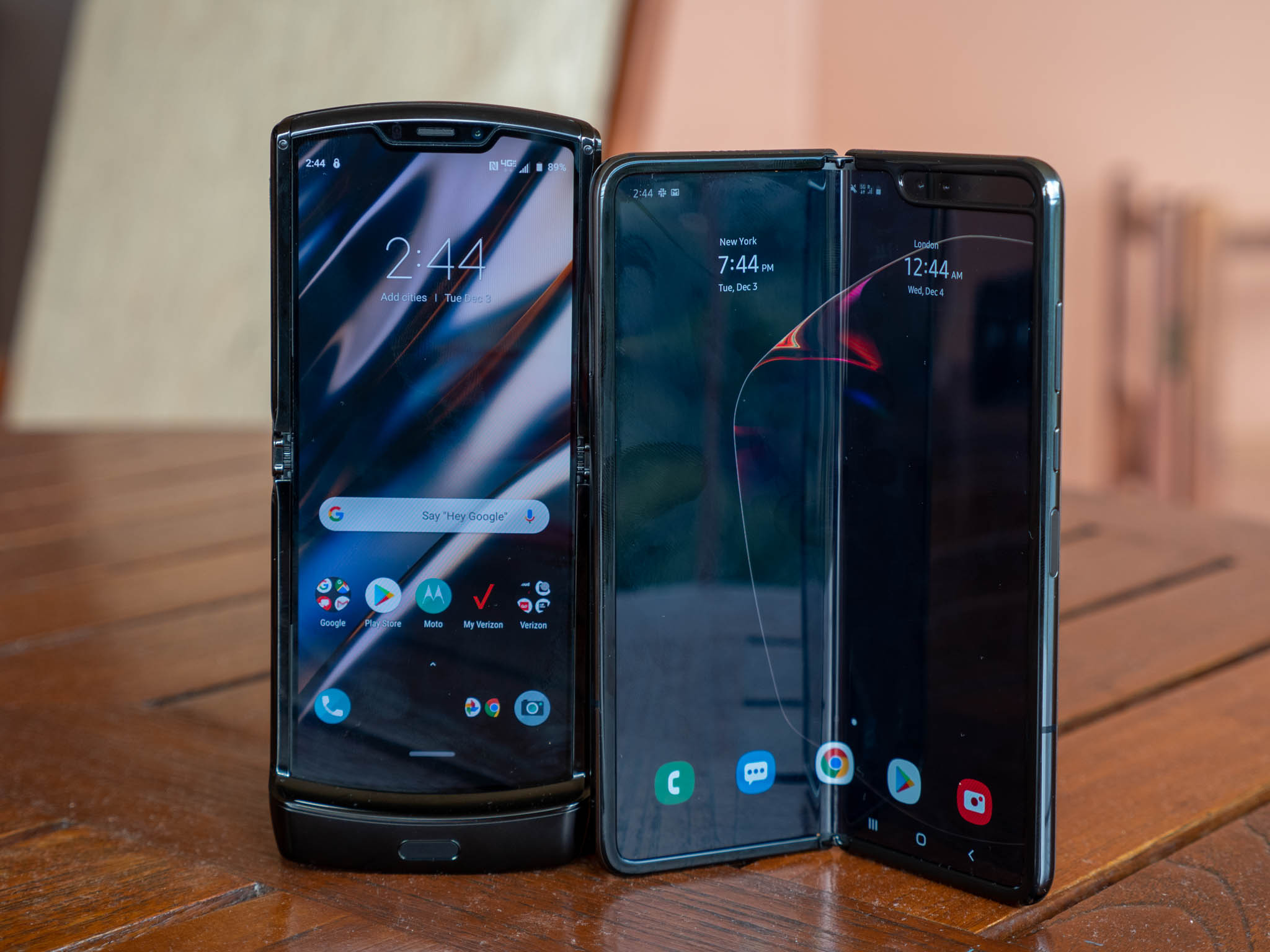
"Smartphones are boring." That's a sentiment that we've been hearing for a while. With devices like the Galaxy S20, Pixel 4, and iPhone 11, you can understand why some people might feel that way. A lot of devices on the market these days are subtle refinements of existing handsets, resulting in phones that are better than ever while lacking an overwhelming sense of excitement.
In the last couple of years, that's changed dramatically thanks to the rise of folding phones. We've been talking and dreaming of folding phones for years, but just recently, they finally went from being a pipe-dream to a very real reality.
The history of the foldable phone is still young, but even so, there's already plenty to talk about. If you want to understand where folding phones started and how we got to where we are today, this is the article for you.
Without further ado, we present a (brief) history of the folding phone.
2018
Although 2018 was a brief year for foldables, this is technically where things got started. 2019 and 2020 are when the gears for the foldable market really got cranking, but we needed these two developments in 2018 to get there.
The Royole FlexPai breaks cover as the world's first folding phone October 31, 2018

Before any mainstream tech company was ready to show off a folding phone, we had the Royole FlexPai. Royole is a Chinese electronics brand that was founded in 2012, and while you may not have ever heard of the company, it's noteworthy for the fact that the FlexPai was the world's first folding smartphone.
Royole opened pre-orders for the FlexPai on October 31 in China, allowing interested shoppers to get their hands on the brand new folding wonder.
Get the latest news from Android Central, your trusted companion in the world of Android
You can actually still buy the FlexPai if you live in China and are interested in the phone, with prices starting at ¥8,999 for the model with 6GB of RAM + 128GB storage. However, as we soon learned that following January, being first doesn't mean you're the best.
Samsung shows off its Infinity Flex Display concept November 8, 2018
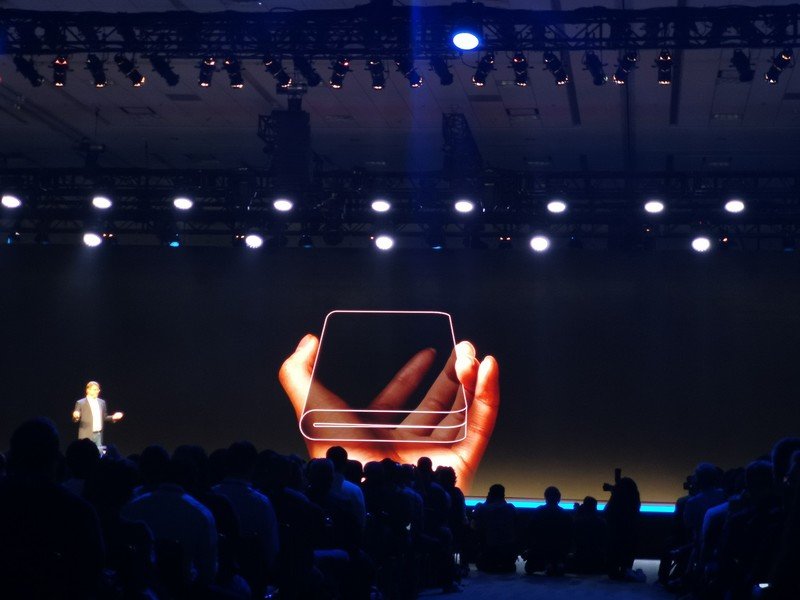
The second and only other highlight from 2018 was arguably more important. During Samsung's annual developer conference, the company unveiled its Infinity Flex Display — a screen technology that could be folded in half.
Samsung showed off a working prototype during the conference, revealing a phone with a large inner display that could be folded up to show a secondary display on the front. The design of the phone was hidden behind a large black case, but as we all know now, that's what went on to become the Galaxy Fold.
Samsung touted that it would be ready to mass-produce its Infinity Flex Display in a "matter of months," and while the company stuck to that promise, it didn't go as smoothly as expected (more on that later).
2019
Our first hands-on with the FlexPai is ... disappointing January 8, 2019
Although pre-orders for the Royole FlexPai began in October 2018, we weren't able to go hands-on with the phone until January 2019. Royole brought the FlexPai to CES that year for everyone to try out for themselves, and that's when we learned all of the shortcomings of the device.
While the FlexPai certainly was a phone that you could fold, that's about where the positives end. As noted in our hands-on below, the FlexPai had uneven bezels, clunky software, and overall questionable build quality.
If you look at the FlexPai, it was essentially two 16:9 displays with an accordion-like hinge connecting them. This resulted in the phone being incredibly wide when opened up and with there being a huge bulk when the phone was closed.
Royole does deserve credit for getting a foldable phone on the market so early on, but as devices like the Galaxy Fold and Z Flip proved, sometimes it's better to wait a little while than jump the gun.
Foldable phones are really here, and they're filled with unfortunate compromises
Galaxy Fold unveiled at Samsung Unpacked event February 20, 2019
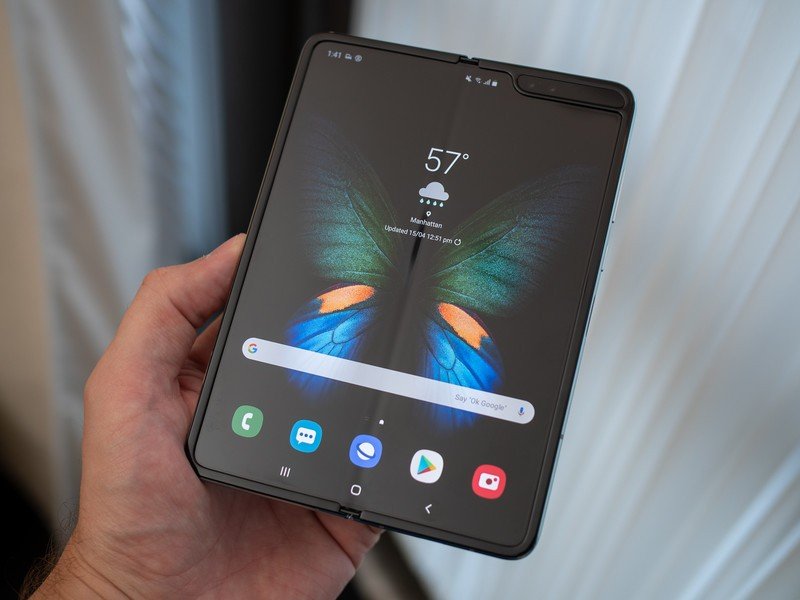
A little over a month after checking out the FlexPai, we were treated to the Samsung Galaxy Fold. While the Royole FlexPai may have technically been the first foldable phone, the Galaxy Fold is the first one that actually made its way to the United States and caught the attention of people outside the tech space.
Just like the concept device Samsung demoed in November 2018, the Galaxy Fold had two screens. The outer/cover display was a 4.6-inch one, making it good for checking texts, answering phone calls, and quick spurts of scrolling through Twitter. The real draw to the Fold, however, was its 7.5-inch inner display that's basically the size of a small tablet.
And that's really the core of what made the Fold so exciting. In one second, it's a fairly typical smartphone (albeit quite chunky). The next, it's a miniature tablet. Being able to fit that much screen real estate in your pocket took the world by storm, and over a year after the Fold's release, it's still something we get overly giddy about.
Samsung planned to offer retail sales of the Galaxy Fold on April 26, and if the folding design didn't take people's breath away, the $1,980 asking price certainly did.
Huawei impresses with the Mate X February 24, 2019
Just four days after the Galaxy Fold was brought into the world, Huawei was quick to counter it with its own folding phone — the Huawei Mate X.
Being the second folding phone that people actually gave a hoot about, the Mate X also drew a lot of attention to itself. It shared the Galaxy Fold's idea of offering a large tablet display in a portable form factor, but it did so in a very different way.
Where the Galaxy Fold has a separate cover display and its inner display is concealed while the phone is closed, the Huawei Mate X wrapped a single screen around the entire body of the phone. So, whether it was closed or open, you were using that same folding display panel. This meant that when the Mate X was in "phone" mode, there was a screen on the front and back — effectively giving you a 6.6-inch front display and 6.38-inch back display next to the cameras. Press a button, and the Mate X would open up to bring the two sections together for a single 8-inch square.
Coming hot off the heels of the Galaxy Fold, the smaller bezels of the Mate X (especially when used as a phone) made it incredibly exciting.
Huawei Mate X first look: Three screen modes, four cameras and five Gs for €2299
Samsung delays the Galaxy Fold's launch over durability concerns April 22, 2019
Just a few days before the Galaxy Fold was scheduled to go on sale, Samsung ended up delaying its launch. Why? It was quickly being revealed that the phone was extremely easy to break.
As members of the media/press were testing the phone, it was becoming quite apparent that the Fold was susceptible to irreversible damage. Dieter Bohn from The Verge and Mark Gurman both took to Twitter to share pictures of their damaged Folds, and on April 23, Samsung began recalling all of these review units.
In just two months, we went from sheer excitement to an uncertain future for the Galaxy Fold. And, unfortunately, it would take quite some time for Samsung to get everything ironed out.
The Galaxy Fold is finally re-released in the U.S. September 27, 2019
More than five months after the Galaxy Fold was delayed and its imperfect design was brought to light, Samsung was finally ready to re-launch the phone in a new and improved fashion.
At its core, the Galaxy Fold was the same phone. All of the specs were the same and it still opened up to reveal that gorgeous 7.3-inch display. However, in an effort to stop the phone from breaking so easily, Samsung made a few much-needed durability tweaks that should have been present from day one.
One of the main culprits of the original Galaxy Fold's breakability was the protective plastic film layered on top of its display. This could easily be pulled off on the first model, so for the reboot, Samsung extended the edges of the film so that the corners were no longer visible. T-shaped caps were also added to the top and bottom of the folding screen, which aimed to stop dust and other gunk from getting underneath the display.
Add that together with a reduced gap between the Fold's hinge and body, and another metal layer to help the screen be stronger, and the Fold was ready for prime time. The delayed launch and months of uncertainty up until this point certainly weren't ideal, but in the end, the Galaxy Fold still managed to be one of the most exciting gadgets of 2019.
Samsung Galaxy Fold 5G review: The best $2,500 I've ever spent
Motorola announces its folding RAZR revival — ushering in the clamshell foldable November 13, 2019
With the Galaxy Fold now available for purchase, it was now Motorola's turn to throw its hat into the foldable ring. As such, we got our first look at the Motorola RAZR.
Piggybacking off of the iconic RAZR flip phone from 2003, the foldable RAZR reintroduced that iconic design and used it to test the waters for a foldable screen. When the RAZR is open, it looks like just another Android phone. However, you can close it up to be about the half the size. This was drastically different from the Galaxy Fold and Mate X, but the added portability of a flip phone folding design is one that a lot of people started seeing the value in.
We live in a world where "normal" phones are always getting bigger, and for a lot of people, devices like the Galaxy S20 Ultra are just too dang big to fit into pockets, purses, etc. With the Motorola RAZR, the idea was to give people a familiar-feeling smartphone that can be much more portable than anything else on the market.
Motorola RAZR hands-on: Back to the future
Huawei launches the Mate X in China after multiple delays November 15, 2019
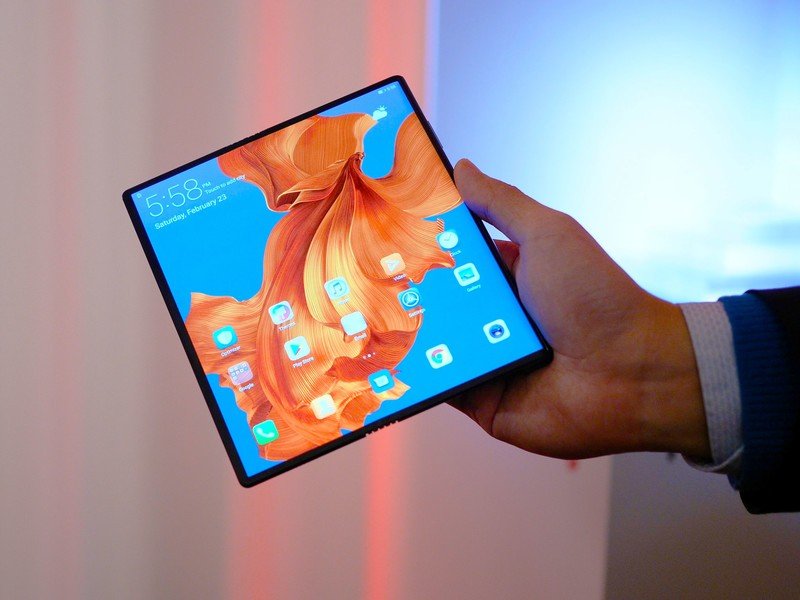
Speaking of the Mate X, the end of 2019 finally saw it be made available for purchase after months and months of delays. Huawei was also faced with durability concerns for its folding phone, though they weren't publicized as much as Samsung's debacle with the Galaxy Fold.
The Mate X never made its way to the United States, only launching in Huawei's home country of China.
2020
Motorola launches the RAZR, but it's a mess February 6, 2020

Kicking off foldable happenings for 2020, it started with a bit of a mess. Motorola's scheduled launch for the RAZR was February 6, but the whole release was far from smooth.
Motorola's shipments and stock seemed to be all over the place, with our own Nirave Gondhia getting his pre-order delivered on February 1 — almost a week before legit sales began. Motorola was also pretty quiet about the RAZR when it did launch, likely in an attempt to get the stock under control and address the questionable build quality early testing pointed to.
Things eventually settled out and the RAZR found its footing, but the rocky launch certainly wasn't ideal.
Samsung strikes again with the Galaxy Z Flip February 11, 2020
With initial hype for the Motorola RAZR quickly fading, Samsung was smart to swoop in just a few days after its launch with the Galaxy Z Flip. This was Samsung's second folding phone, and just like the RAZR, it used the flip phone design.
While the idea behind the RAZR and Z Flip are very similar, it became quickly apparent that the Z Flip was the better-executed of the two. It had a faster processor, larger battery, higher-res display, and better cameras — not to mention a smaller price tag.
The Z Flip was also met with some controversy shortly after its release, but nowhere near on the same scale as the Galaxy Fold. Samsung was very boastful about the Galaxy Z Flip being the first folding phone with a foldable glass display, and while the Z Flip's screen is glass, it's covered by a protective plastic layer. As such, it's still very easy to scratch and dent.
While not a critical design flaw similar to what the Fold was met with, it was a bad marketing decision that led some people to believe they were getting something they weren't. However, even with that caveat in mind, it's pretty impressive Samsung was able to put a folding glass display in a phone just about a year after the Fold was announced.
Just a few days later, the Z Flip is released to the masses February 14, 2020
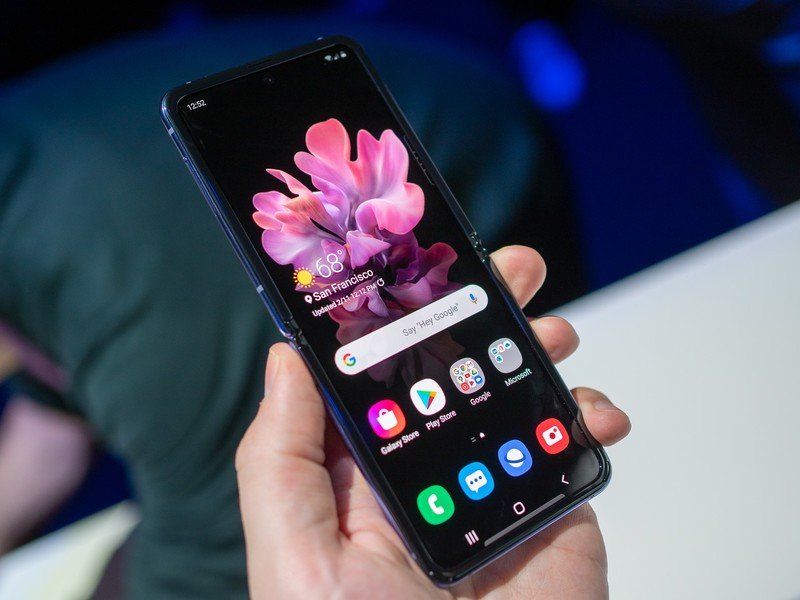
Perhaps even more impressive about the Galaxy Z Flip is how quickly Samsung was able to sell it. The phone was announced for the first time on February 11 and made available for purchase on February 14.
Stock was quickly depleted on Samsung's own website and at its carrier partners, but as of right now, the initial hysteria has died down and you can go out and purchase a Z Flip just as easily as any other smartphone.
Samsung Galaxy Z Flip review: The weird and wonderful foldable
Huawei offers subtle upgrades with the Mate XS February 24, 2020
Exactly one year after the Mate X was unveiled, Huawei decided to announce its successor in the form of the Mate XS.
If you think the Mate XS looks a lot like the original Mate X, you aren't wrong. The design is mostly unchanged, with there still being a single folding display that's used for the phone and tablet modes of the device. Just like the rebooted Galaxy Fold, the Mate XS touted improved durability and ruggedness compared to the Mate X.
Huawei also crammed in the usual spec upgrades, including a faster processor and better cameras.
Above all else, the real highlight for the Mate XS is its availability. While the Mate X was never sold outside of China, Huawei is planning an international launch for the Mate XS. Specifics on this are still unknown, but we're hoping to learn more soon.
Huawei Mate XS + MatePad 5G hands-on: Foldables come to the post-Google era
TCL shows off three folding phone prototypes March 5, 2020

Samsung, Huawei, and Motorola have been leading the foldable craze up until this point, but on March 5, TCL entered the ring with three concept devices that knocked our socks off.
First, there's the bifold tablet (the one to the left pictured above). As you can see, it has two distinct folds that allow it to open up and reveal a massive 10-inch display. You can close one of those folds for a smaller tablet, or turn it into a 6.6-inch phone.
There's also the rollable/extending folding phone, the device on the right in the above picture. What you see now is the phone with its full display extended, but that extra screen can roll back into itself and create for a normal smartphone form factor. TCL's third folding phone is essentially its answer to something like the Galaxy Fold, and while it's still interesting, it's not quite as exciting as the other two devices.
It's important to note that all of these foldables are 100% concepts. In other words, it's possible that TCL will never bring them to market. Even with that being the case, it's very exciting to see another company's take on folding phones and to get an idea for what TCL could release in the near/distant future.
TCL shows off crazy foldable prototypes, including a rollable extending screen and bifold tablet

Joe Maring was a Senior Editor for Android Central between 2017 and 2021. You can reach him on Twitter at @JoeMaring1.








